By Eric Vandenbroeck
and co-workers
What Russian Airstrikes Will Result In
On October 10-11,
Russia escalated its war against Ukraine with an enormous wave of airstrikes against
Ukrainian civilian infrastructure since the invasion began almost eight months
earlier. In a 10 October statement, Secretary-General António Guterres called the air
assaults “another unacceptable escalation of the war.”
The Kremlin has
telegraphed that it wanted to slow Ukraine’s battlefield advances with strikes
targeting infrastructure and civilians. Russian troops’ cruel logic, experts
said, is that if they can’t beat Ukrainian soldiers on the battlefield, they
will try to harm their wives and children at home. And Putin also has to play
for time, spreading out Ukrainian defenses, with a purported 300,000 mobilized
Russian reserves not set to be ready for weeks.
Beginning in
early October, facing huge territorial losses and other reversals in
Ukraine, Russian President Vladimir Putin reached for a military strategy in
which Russia should have a decisive advantage: airpower. In the most widespread
such campaign, he ordered a blistering series of missile attacks against a
dozen cities and electrical infrastructure across the country. Ukrainians were
forced into basements and bomb shelters, and some 30 percent of the country’s
power generation capacity was knocked out, causing rolling blackouts that
affected homes, hospitals, and even the basic functioning of the economy.
Recently, Russia has sent waves of drones to attack residential buildings and
offices in Kyiv and other cities. In effect, Putin reminded the Ukrainian
government of his ability to attack its main population centers.
The threat that
Ukraine, having scrapped Soviet-era bombers long ago, having no long-range
rockets able to hit Russian cities, and having only a tiny number on
the ground, the goal, it seems, is to punish civilians, wearing them down
in the hope of convincing their leaders to sue for peace.
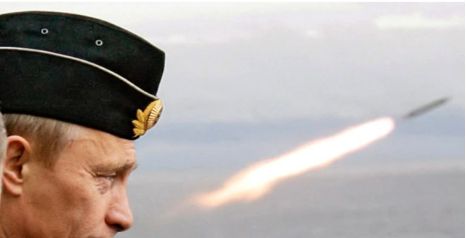
But as suggested before, it is a strategy doomed to
failure. As in earlier phases of the war, Russia’s supposed air
superiority has done little to shift the overall momentum on the ground.
Despite the significant damage they have caused, Putin’s airstrikes have failed
to hinder Ukrainian advances in the east. And when they have reached civilian targets,
they have only served to strengthen Ukrainian resolve.
The paradoxical
outcome of Russia’s bombing campaigns suggests a more critical insight into
airpower in contemporary warfare. For decades, bombing civilian areas—as ugly
and immoral as it gets in war—has been one of the most common strategies states
have used to undermine the target population’s morale and induce the target
government to surrender. Putin’s invasion of Ukraine, especially his
recent escalation, has been no different. But as dozens of conflicts over
the past century have demonstrated, using airpower against civilian targets is
almost always doomed to failure. And as target countries like Ukraine obtain
more advanced land-based munitions, the flaws of the airpower strategy have only
become more apparent.

The Myth Of Shattered Morale
Modern states have
often sought to punish the civilian populations of their adversaries.
Generally, they have done so as a cheap and easy way to compel enemy
governments to make concessions, retreat, or even surrender outright. The most
common air strategy is attacking civilians, either directly by bombing
residential areas or indirectly by damaging the economic infrastructure
necessary for food distribution, homes heating homes, and the electrical
powering of the civilian economy.
The idea started in World War I, when German leaders,
desperate to knock the United Kingdom out of the war, launched waves of
zeppelins—huge maneuverable balloons loaded with bombs—to attack London and
other British cities. Later they added Gotha aerial bombers, killing
many hundreds but producing no results until finally calling off the
punishment campaign in 1917. Other strategic-bombing advocates, like Italian
General Giulio Douhet, wrote highly influential books
claiming that huge air attacks on the enemy’s cities would cause civilians to
rise and demand that their government surrender, thus producing victory without
the need for messy ground battles. Germany, the United Kingdom, and the United
States rapidly expanded their air forces in the 1920s and 1930s, basing their
doctrines on the premise that direct or indirect attacks on civilians would be
the key to winning modern wars.
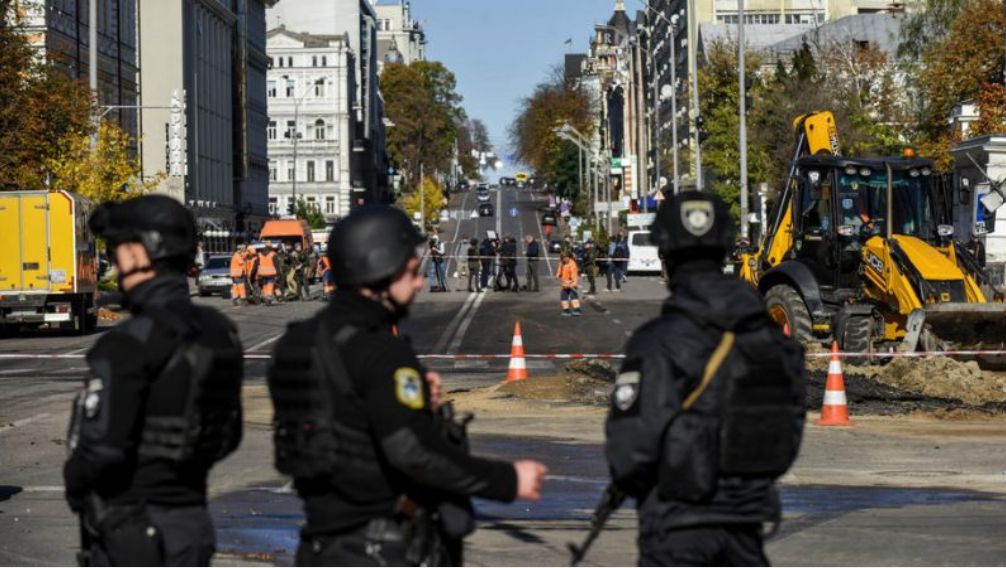
These “get tough” strategies
by governments have often been welcomed by their public because they can
produce dramatic, immediate tactical results at a little military cost to one’s
side and extract what is perceived as a measure of revenge for the rival's
actions. Occasionally, strategic airpower had had notable results on the
battlefield, as when the United Kingdom’s Royal Air Force suppressed tribal
rebellions in Iraq in the 1920s and when German planes helped General Francisco
Franco’s Nationalist army capture territory in the Spanish Civil War. However,
often overlooked in these cases was that changes in the military balance on the
ground, rather than punishment of civilians, played a decisive role.
As many other
conflicts have shown, the gains of punishment strategies tend to be
short-lived. Consider what happened when German bombers blasted London and
other British cities in 1940–41, killing more than 50,000 people. Like
Ukrainian President Volodymyr Zelensky today, British Prime Minister Winston
Churchill refused to hide in bomb shelters. He would walk through the rubble,
leading through demonstrative action and rallying the whole of society to make
the sacrifices necessary for ultimate victory. Instead of shattering morale,
the Blitz motivated the British to launch—with their American and Soviet
allies—the counterattack that ultimately conquered Nazi Germany.
Indeed, inflicting
punishment on civilian areas is immoral and is singularly unproductive as a
strategy for putting pressure on an adversary. Whether the punishment is meted
out massively or lightly, quickly or slowly, whether it is combined with
diplomatic proposals or not, the historical record shows that harming civilians
is also unlikely to compel rival states to surrender or to cut deals that
effectively abandon territory that is important to the viability of the state
or national identity.
Nor is there any case
in which a bombing campaign has caused the targeted population to revolt
against their government. For example, in several major wars in the second half
of the twentieth century, Washington sought to foment popular uprisings against
enemy regimes by attacking civilian infrastructure. Thus, during the Korean
War, the United States destroyed 90 percent of power generation in North Korea;
in the Vietnam War, it knocked out nearly as much power in North Vietnam; and
in the Gulf War, American air attacks disrupted 90 percent of power generation
in Saddam Hussein’s Iraq. But in none of these cases did the population rise
up. Strikingly, the United States did not bother attacking Iraq’s electric
power grid or civilians during its 2003 invasion. Concentrating on effective
military strategy, it could easily defeat Iraq’s army and topple the Saddam
dictatorship in six weeks.
In World War II,
of course, the effects of the Allied bombardment of Germany and Japan were much
more extreme. Cities were firebombed and destroyed by U.S. and British forces;
conventional munitions killed more than 300,000 German civilians and 700,000
Japanese civilians—and more than 20 percent of each country’s population was
homeless. Yet even then, there was no public pressure on either regime to
surrender. Suppose modern nation-states in fights for the control of their
homeland can withstand that. In that case, there is little reason to think that
Russia’s relatively less punishing bombardment of civilians in Ukraine will
cause Ukrainians or their leaders to give in.
Hammer Requires Anvil
By contrast, airpower
has proved effective in achieving military objectives rather than punishing
civilians. In war after war, theater airpower—smashing enemy ground forces and
weakening them to the point where one’s ground forces can dominate a zone of
conflict—can provide a powerful tool of coercion combined with adequate land
power. In 1972, the United States compelled North Vietnam to cease conventional
aggression by coordinating its massive Linebacker bombing campaign with South
Vietnamese army forces. In 1991, the United States successfully made Saddam withdraw from Kuwait by combining the first
modern precision air campaign with a coalition of ground forces. And the
absence of theater airpower can seal the fate of a friendly army, as the United
States discovered when Congress blocked the use of U.S. airpower in Vietnam in 1974, and Saigon fell the following
year. The lesson was repeated in Afghanistan, with the U.S. withdrawal of
theater airpower before the collapse of the Afghan army in the summer of 2021.
A Ukrainian flag on a street of the recently liberated
village of Vysokopillya
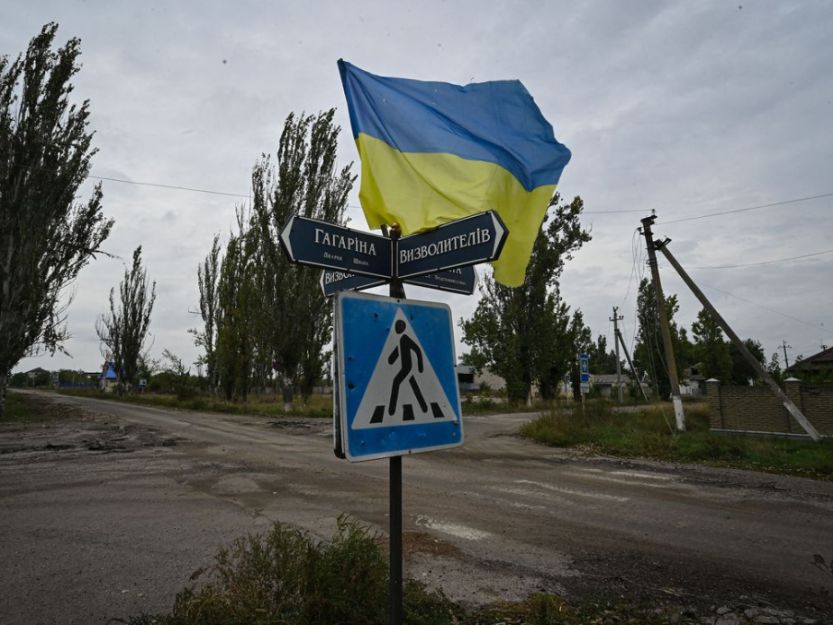
The combined use of
theater airpower and friendly ground forces has a clear logic. Once wars begin
in earnest, achieving victory becomes paramount. In war, successful leaders
soon discover—sometimes after exhausting cheaper but less effective
strategies—denial is the key to successful coercion. Successful leaders realize
there is no realistic option other than directly thwarting the enemy’s ability
to take or hold territory. In other words, the coercing state succeeds to the
extent that it can prevent its opponent from achieving its military objectives.
In actual warfare,
denial works best via a strategy in which the combined force of air power and
ground power puts the enemy in a military Catch-22. Suppose the enemy
concentrates its ground forces in large numbers to form thick and overlapping
fields of fire to withstand a ground assault best. Those forces will become
vulnerable to the air, and the airpower hammer can smash them to bits. But
suppose the enemy disperses its ground forces across a wide area to make
effective airstrikes more complex. In that case, it risks leaving them thinly
scattered and exposed to easy defeat on the ground, allowing friendly ground
forces to overwhelm isolated enemy units, easily break through weak enemy
lines, and encircle vast portions of the enemy forces.
From its previous
wars, Russia should have understood the
need to combine air and ground power. Consider its supposed successes in
punishing civilians in Chechnya during the 1990s or in Aleppo during the Syrian
civil war. Although Russian military forces indeed extracted a heavy price from
civilian populations in both cases, what ultimately mattered was the balance of
forces on the ground. In Chechnya, Russia blasted civilians in Grozny in 1994. Still, its ground forces were soon
defeated by the rebels, and the Russian military successfully conquered the
republic by invading with a much larger ground army in 1999. In Aleppo, the
forces of Syrian leader Bashar al-Assad and Hezbollah ultimately made the
difference, taking rapid control of areas bombed by Russia. Take away these
well-equipped ground forces, and Russia’s air campaigns would almost certainly
have failed.
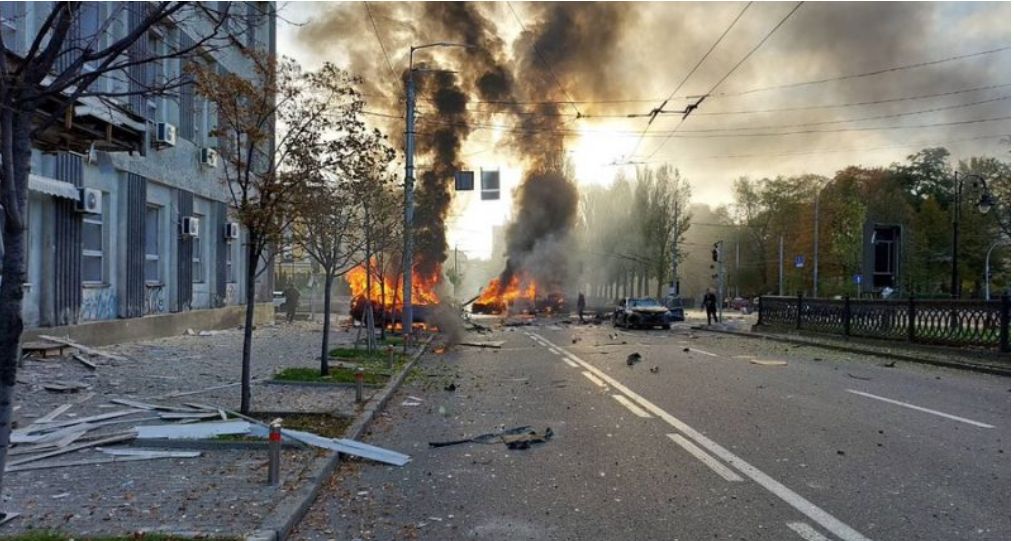
From The Ground Up
Much has been made in
recent years of advances in precision weaponry, ostensibly strengthening the
hand of airpower. Yet today’s precision
weapons have not proved any more effective in coercing enemies by destroying
political and economic targets in civilian areas since it has long been
possible to destroy such targets with large numbers of “dumb” bombs. Nor have
precision weapons made strategies targeting the enemy’s leadership any more
effective. Such efforts have repeatedly failed against various enemies,
including Muammar al-Qaddafi in 1986; Saddam Hussein in 1991, 1998, and 2003
(ground forces finally captured him); and Hezbollah leaders in 2006.
Moreover, nothing
motivates an enemy’s civilian base more than killing its leader. In April 1996,
Russia used air-to-ground missiles to assassinate the Chechen leader Dzhokhar Dudayev, only to
see a more energetic leader take over, kick Russia’s ground forces out of the republic,
and win control when Russia invaded with massive ground forces three years
later. There are exceptions to this pattern, but they only prove the rule:
aerial targeting of al Qaeda leaders in Pakistan
from 2001 to 2010 succeeded in weakening the group, precisely because it had so
little indigenous support in Pakistan.
The true innovation
of precision airpower has been to enhance the value of the hammer-and-anvil
strategy. Today’s precision weapons allow airpower to destroy
massed enemy ground troops more efficiently and attack other smaller but
essential battlefield targets. Until the advent of these weapons, airpower
could rarely destroy tanks, trucks, command posts, or bridges used to supply
fielded forces, even with thousands of bombs aimed at these tiny targets. Now,
satellites, advanced sensors, and various manned and unmanned bombing platforms
can reliably locate concentrated enemy forces for precision strikes
to destroy.
This precision
revolution has been more evident than in Ukraine’s military forces. Even
before the arrival of advanced precision weapons from the West in the early
summer, Ukrainian forces had been greatly strengthened by the fighting resolve
that Russia’s failed invasion strategy had provoked. Since then, Ukrainian
troops have been able to use two primary forces and an encirclement
maneuver splendidly to Kyiv’s advantage—not only in defending against Russia’s
initial incursion but also in rolling back Russian forces, even in areas of the
east that were far better defended. These tactics have been especially
effective against Russia’s most dug-in, best defensively fortified ground
forces in eastern zones of the country. Ukraine’s triumphs in these situations
have been made possible not by tactical airpower but by advanced ground-based
weaponry, such as the HIMARS missile system. It is not a stretch to consider
each HIMARS missile battery—the United States has provided Ukraine with 16 of
them, with another 18 on the way—as having the air-to-ground combat power and
effectiveness of several F-16 aircraft. With the flexibility and range to
coordinate with Ukrainian ground forces, they can be used against Russian
forces in a given area, wherever they may be.
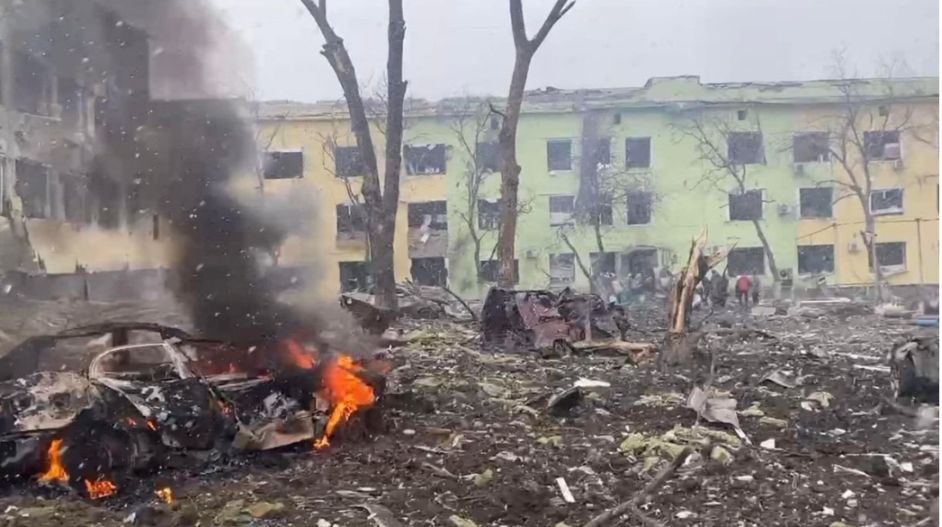
Just as important,
Russia has made clear through its battlefield performance that it has hardly
begun to move into the precision age. The world has witnessed how poorly a great
power with a huge but largely “dumb
bomb” military may fare against a much smaller state with access
to precision-age weapons. The Russian military has been losing territory
steadily for many months—in March and April. It May near Kyiv and the border
with Belarus, and since the early summer in the territories, it had newly
seized in the east. There is no obvious reason to think that the Russian
military’s pre–February 2022 positions in the east and Crimea are not
ultimately vulnerable as well.
Losing Ukraine Or Losing Russia?
Given the failure
of Putin’s campaign of civilian
punishment and the growing effectiveness of Ukraine’s HIMARS-assisted
ground offensive, many commentators have begun to ask how the war might
end. History shows that when an opponent is persuaded that specific
territorial objectives cannot be achieved, it is likely to concede that
territory, either tacitly or formally, rather than suffer further pointless
losses. But this form of coercion—getting an opponent to recognize that
prolonging a war is futile—is rarely cheap or easy. Even successful coercion
usually takes nearly as long and costs almost as much as fighting a war to a
finish. This lesson applies readily to the war in Ukraine today.
Given current
military realities, those calling for the United States and its allies to
persuade Ukraine to accept a deal in the east are asking the
West to bail out Russia. This is unrealistic for two reasons. First, Ukraine
will not and should not agree. Its forces have the momentum and have every
reason to expect more territorial gains, and it would be foolish to force them
to abandon a winning hand. Second, Russia might accept a deal soon but could
easily violate it months or years later. In short, any deal in eastern Ukraine
is unlikely to be credible unless powerful reinforcing mechanisms can back it
up. These mechanisms would need to include agreements to respect international
borders with the presence of third-party oversight, as well as military forces.
They would likely be necessary to stabilize any end to the war, negotiated or
not.
In the meantime, the
United States and NATO are right to reinforce support and provide additional
air defenses for Ukraine. These steps can mitigate some of the harm to
civilians by Russia’s attacks and demonstrate that attacking urban centers
only hardens the resolve of the West and Ukraine. Ultimately, an end to the war
while the current regime remains in power in Russia would likely require
establishing a hard militarized border to keep Russia from potential conquests
in Ukraine and other parts of eastern Europe. As with the Iron Curtain during
the Cold War, such a fortified boundary would prevent advances in both
directions. It would also deter any conventional offensive by either side by
denying Russia and the West the prospect of rapid territorial incursions.
But as Putin has made
clear with his escalating nuclear rhetoric, the
conflict potentially involves more than
conventional weapons positions in eastern Ukraine. Still, he could
risk losing large parts of Russia by going nuclear. To paraphrase the German
Chancellor Otto von Bismarck, this would be committing suicide for fear of
death.
Indeed, no matter how
lethal its bombs are against civilians, Russia cannot reverse its strategic
failures in Ukraine, which are already playing out. Once Putin lost the gamble
that Russia’s military had the wherewithal to defeat and occupy all of Ukraine
in the February–March blitzkrieg campaign. Once Ukraine and the West responded
by mobilizing a powerful counterbalancing coalition to defend the country,
Russia’s options narrowed almost immediately. Since April, many in the West—and
Putin and others in Russia—have been watching the inevitable aftermath of the
initial miscalculations that led to that massive failure.
Putin can punish
Ukrainians, as his air campaign has shown. But lacking an effective
hammer-and-anvil strategy of his own, he is only losing faster. The only
question is whether he will accept a new iron curtain separating Russia from
Europe or continue fighting pointlessly to the finish and risk losing parts of
Russia.
As for today, Western
analysts gave an unambiguous interpretation of Russian general Surovikin's statements about "difficult
decisions" regarding Kherson. They believe it means preparing for a
retreat from the right bank of the Dnieper. While British intelligence suggests
that the withdrawal will be carried out with the help of a barge bridge and
pontoon crossings. And The American Institute for the Study of War reports
that Surovikin's statements "are likely attempts
to set information conditions for a full Russian retreat across the Dnipro
River, which would cede Kherson City and another significant territory in
Kherson Oblast to advancing Ukrainian troops.
For updates click hompage here